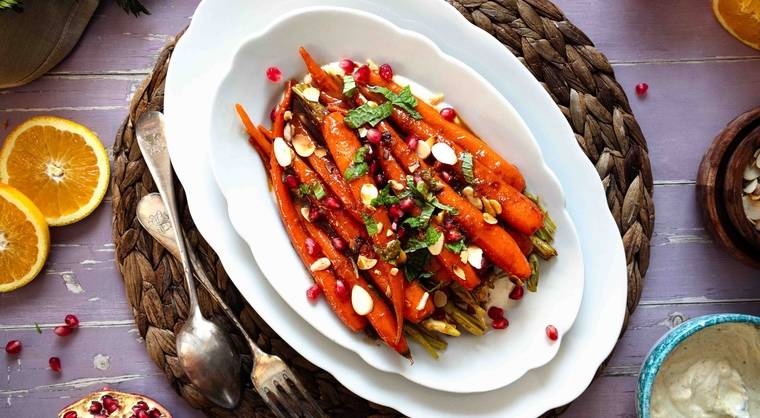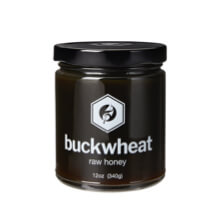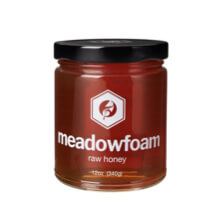Cooking with Honey: Do's and Don'ts
November 05, 2025

Heat can bring out honey's deeper caramel notes or, if overdone, it can mute its delicate character altogether. So what's the secret to getting it just right? Let's take a closer look at the golden rule of cooking with honey: when to turn up the heat, and when to keep things cool.
What Happens When You Heat Honey
Honey may seem simple, but it's a complex mix of natural sugars, enzymes, and trace minerals. When you warm it gently, those sugars soften, and the texture becomes smooth and luxurious. But expose it to high heat for too long, and things change.Too much heat can cause honey's sugars to caramelize, which can create a deeper, toffee-like flavor. This is great for baking, but not ideal when you want to keep honey's natural floral character. On a chemical level, excessive heat also breaks down enzymes and aromatic compounds that make each honey unique and good for you.
Honey is a bit like olive oil or wine: the more it's refined or overheated, the less of its natural nuance remains. A little warmth goes a long way; beyond that, you risk losing what makes it special.
When It's Perfectly Fine to Heat Honey
Heating honey isn't always a bad thing. In fact, a little warmth can unlock its flavor and make it more versatile in the kitchen.Baking
When used in breads, cakes, or cookies, honey adds moisture, sweetness, and a hint of caramel richness. The baking process naturally involves higher heat, but since honey is mixed into other ingredients, its flavor mellows beautifully without burning.Glazes and marinades:
Warming honey helps it blend more easily with oils, spices, or vinegars. It's the secret behind roasted carrots, golden chicken wings, or that irresistible sticky drizzle on salmon.Warm drinks:
Stirring honey into a warm beverage like tea, cider, or coffee enhances flavor and texture. Just let your drink cool slightly before adding honey so you don't scorch away its subtle aromatics.
Different varieties shine in different ways. Clover Honey is delightfully classic and suitable for baking and glazes. Buckwheat Honey adds depth and richness to warm drinks or hearty recipes. Orange Blossom Honey brings a gentle citrus note that's perfect for tea or dessert sauces.

When You Shouldn't Heat Honey
Now for the "not so hot" part of the story. While honey can handle a little warmth, it's best to avoid exposing it to high temperatures or prolonged heat.Once honey climbs above about 140°F (60°C), its beneficial enzymes begin to break down. This doesn't make it unsafe, but it does dull its complexity and natural goodness. That's why raw honey, with its untouched flavor and texture, is often prized for cool or room-temperature uses.
Skip the heat when:
• You're enjoying raw or specialty honey for its natural flavor.
• You're adding honey to delicate foods like yogurt, whipped cream, or fruit.
• You're sweetening drinks — add it after the liquid has cooled slightly instead of stirring it into boiling water.

You can still enjoy honey's warmth without overdoing it. Try adding some golden goodness after roasting vegetables or after baking breads for a glossy finish that keeps the flavor bright. Meadowfoam Honey, with its soft floral notes, also makes a beautiful finishing touch over cheeses or pastries.
How to Handle Crystallized Honey
It's something that's happened to every honey lover everywhere: opening your pantry to find your honey grainy or solidified. But don't worry! This is perfectly natural, and an inevitable part of storing honey. Crystallization happens when glucose in the honey separates and forms tiny crystals. It's actually a sign of purity, not spoilage.To bring crystallized honey back to life, gently warm it. Place the jar in a bowl of warm (not boiling) water and stir occasionally until it returns to a smooth, pourable texture. If using a microwave or direct heat, make sure to go it in slow intervals to avoid scorching the honey and altering its taste.
Treat Honey Like the Treasure It Is
Honey is one of nature's simplest pleasures, but it rewards care. The key to unlocking its full flavor is knowing when to turn up the heat, and when to let its natural sweetness shine untouched.In baking and glazing, warmth deepens honey's richness and brings out comforting, toasty undertones. In tea, drizzles, or raw recipes, cool or gentle temperatures let its delicate floral character glow.
So the next time you cook or bake, keep the golden rule in mind: a bit of warmth is wonderful, but true flavor blooms when you treat honey gently.